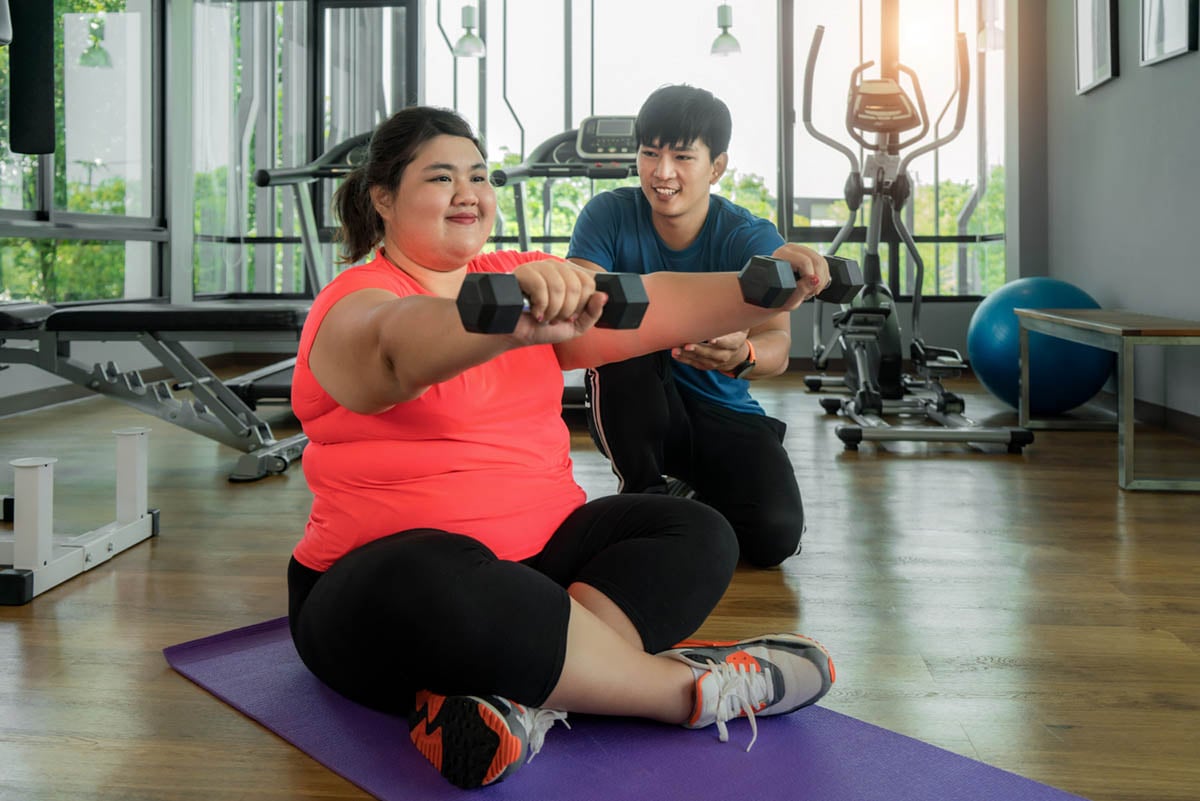Health-related fitness is a multifaceted concept that emphasizes physical capabilities crucial for overall health and well-being. Understanding what are the 5 components of fitness—cardiovascular endurance, muscular strength, muscular endurance, flexibility, and body composition—provides a comprehensive framework for developing a balanced and effective fitness regimen. Each component plays a unique role in enhancing our physical health …
What are the 5 Components of Health-Related Fitness?

Health-related fitness is a multifaceted concept that emphasizes physical capabilities crucial for overall health and well-being. Understanding what are the 5 components of fitness—cardiovascular endurance, muscular strength, muscular endurance, flexibility, and body composition—provides a comprehensive framework for developing a balanced and effective fitness regimen. Each component plays a unique role in enhancing our physical health and functionality, making it essential to integrate all five into any fitness plan. Let’s describe the components of health-related fitness to understand their importance.
Cardiovascular Endurance
Cardiovascular endurance, also known as cardiorespiratory endurance, is the ability of the heart, lungs, and blood vessels to supply oxygen to the muscles during sustained physical activity. This component is vital for enhancing overall fitness levels and supports daily activities by improving stamina and reducing fatigue.
Definition:
Cardiovascular endurance refers to the ability of the heart, lungs, and circulatory system to supply oxygen and nutrients efficiently to working muscles during sustained physical activity. It is a key indicator of overall aerobic fitness and stamina.
Benefits:
Improving cardiovascular endurance has numerous benefits, including enhanced heart health, increased lung capacity, better circulation, reduced risk of chronic diseases like hypertension and diabetes, and improved energy levels. It also aids in weight management and promotes mental health by reducing stress and anxiety. This makes it one of the 5 components of fitness essential for a healthy lifestyle.
How to Improve:
To enhance cardiovascular endurance, incorporate activities that elevate your heart rate and keep it elevated for extended periods. Most studies show that cardiovascular training requires a minimum of 30 minutes, three times per week, to guarantee increased aerobic capacity in about 8 to 12 weeks. Popular cardiovascular exercises include running, swimming, cycling, brisk walking, and aerobic classes. It’s important to gradually increase the intensity and duration of these activities to continue improving your endurance.
Muscular Strength

Muscular strength refers to the maximum amount of force a muscle or group of muscles can exert in a single effort. Developing muscular strength is essential for performing daily life tasks efficiently, such as lifting heavy objects, and can enhance athletic performance and overall physical health.
Definition:
Muscular strength is the maximum amount of force a muscle or group of muscles can generate during a single contraction. It is a crucial component of fitness for performing everyday activities and enhancing overall physical performance.
Benefits:
Building muscular strength improves muscle mass, enhances metabolic rate, supports joint health, and reduces the risk of injury. Strong muscles also contribute to better posture, balance, and coordination, making daily tasks easier to perform. This is essential for maintaining a high quality of life.
Exercise to Enhance:
The best way to build muscular strength is to have a resistance-training plan. Some call it strength training or “weightlifting,” but you don’t have to lift weights to improve your muscles. Bodyweight exercises, resistance bands, and weight machines are effective alternatives. Key exercises to include are squats, deadlifts, bench presses, rows, and overhead presses. When engaging in these exercises, ensure you use proper form and consider the appropriate rep ranges for your training program. Aim to work all major muscle groups and progressively increase the resistance or heavier weights used.
Muscular Endurance
Muscular endurance is the ability of a muscle or group of muscles to sustain repeated contractions over an extended period. This component is vital for activities that require prolonged effort, such as running, cycling, or performing manual labor.
Definition:
Muscular endurance is the ability of a muscle or group of muscles to sustain repeated contractions against resistance for an extended period. It is vital for activities that require prolonged physical effort, helping to improve the functional capacity of the body.
Benefits:
Improving muscular endurance enhances overall stamina, reduces fatigue, and allows for better performance in physical activities and sports. It also supports cardiovascular health and helps maintain a healthy body weight.
Training Tips:
To improve muscular endurance, focus on performing high-repetition, light-weight exercises. Circuit training, bodyweight exercises, and activities like cycling and swimming are excellent for building endurance. Incorporate exercises like planks, push-ups, lunges, and burpees into your routine. Aim for higher repetitions (15-20) with shorter rest periods between sets.
Flexibility
Flexibility refers to the range of motion available at a joint or group of joints and is essential for overall mobility and injury prevention. Improving flexibility can enhance athletic performance and ease daily movements, making it a crucial component of fitness. For example, flexible shoulders can significantly improve your ability to perform overhead activities.
Definition:
Flexibility is the range of motion available at a joint or group of joints. The length and elasticity of muscles and connective tissues determine it. Flexibility training is key to improving this range of motion.
Importance:
Flexibility is crucial for overall physical health as it enhances movement efficiency, reduces the risk of injuries, and improves posture. It also aids in relieving muscle tension and soreness, promoting relaxation and mental well-being. Regular static stretches can significantly improve flexibility.
Methods to Increase:
To improve flexibility, incorporate stretching exercises into your daily routine. Static stretching, dynamic exercises, and yoga are effective methods. Focus on all major muscle groups, holding each stretch for at least 15-30 seconds. Regularly practicing flexibility training exercises will enhance your range of motion and overall mobility. Additionally, active stretching and isometric exercises can be very beneficial.
Body Composition
Body composition refers to the proportion of fat, bone, water, and muscle in the body, providing a clear picture of one’s overall health. Maintaining a healthy body composition is crucial for optimal physical performance, effective weight management, and reducing the risk of chronic diseases like hypertension and diabetes. Measuring body mass and monitoring adipose tissues are essential for understanding and maintaining a healthy body composition.
Definition:
Body composition refers to the proportion of fat and non-fat mass in the body. A healthy body composition is characterized by a lower percentage of body fat and a higher percentage of lean tissue mass.
Importance:
Maintaining a healthy body composition is vital for overall health and fitness. It reduces the risk of chronic diseases, including heart disease, improves metabolic efficiency, supports physical performance, and enhances appearance and self-esteem. Regular aerobic activity can help manage body composition effectively.
Ways to Manage:
Managing body composition involves a combination of regular physical activity, balanced nutrition, and healthy lifestyle choices. To build muscle and reduce fat, engage in cardiovascular and strength training exercises. Monitor your dietary intake, focusing on nutrient-dense foods, including healthy fats, and maintain a caloric balance to support your fitness goals. Using methods like bioelectrical impedance can help accurately measure body composition and track your progress. Methods like underwater weighing can help accurately measure body composition.
How to Create a Balanced Fitness Plan Using the 5 Health-Related Components

Creating a balanced fitness plan involves integrating all five fitness components of health-related fitness. Start by setting clear, achievable goals for each component. Incorporate a mix of cardiovascular exercises, strength training, endurance activities, flexibility workouts, and strategies to manage body composition. Ensure your plan includes variety to prevent boredom and overuse injuries. Regularly assess your progress and adjust your routine to continue challenging your body and achieving optimal results. Incorporate anaerobic activities for muscle strength and aerobic exercises for cardiovascular health, aiming for a holistic approach to fitness. Understanding the 5 components of physical fitness helps tailor your training to achieve balanced results. Following physical activity guidelines can help structure your fitness plan effectively.
How Sustain Physical Therapy and Performance Can Help You Achieve Your Fitness Goals
At Sustain Fitness and Physical Therapy, we offer personalized fitness programs designed to address all five components of health-related fitness. Our team of experienced fitness consultants and physical therapists will work with you to create a tailored plan that meets your specific needs and goals. Whether you’re looking to improve cardiovascular endurance, build muscular strength, enhance flexibility, or manage body composition, we have the expertise and resources to guide you on your fitness journey. Discover the advantage of personal training with our dedicated professionals who provide customized workout plans and support to help you achieve your fitness objectives. Visit our fitness centers for a comprehensive fitness experience.
By understanding and applying the principles of these five components, you can optimize your fitness routine and achieve lasting health and wellness. Let Sustain Physical Therapy and Performance be your partner in this journey, providing the guidance and support you need to succeed. Our comprehensive exercise program is designed to meet all your fitness needs.
Conclusion
Understanding and incorporating the five components of health-related fitness into your routine is essential for achieving optimal health and physical performance. By focusing on cardiovascular endurance, muscular strength, muscular endurance, flexibility, and body composition, you can create a well-rounded fitness plan that promotes overall well-being and longevity. Remember, consistency and dedication are key to seeing results and reaching your fitness goals. Regularly engaging in aerobic exercises can significantly improve overall health.
FAQs
How can you improve your cardiovascular endurance?
To improve cardiovascular endurance, engage in activities that elevate your heart rate for sustained periods, such as running, swimming, cycling, and aerobic classes. Aim for a minimum of 30 minutes three days per week.
Why is body composition important in life?
Body composition is important because it influences overall health, the risk of chronic diseases, physical performance, and self-esteem. Maintaining a healthy body composition supports metabolic efficiency and reduces the risk of conditions like obesity, diabetes, and heart disease. Regular monitoring of body fat composition helps maintain a healthy lifestyle.
What is the difference between muscular strength and muscular endurance?
Muscular strength is the maximum force a muscle can produce in a single effort, while muscular endurance is the ability of a muscle to sustain repeated contractions over time. Strength training focuses on high resistance and low repetitions, whereas endurance training emphasizes low resistance and high repetitions. A key difference is the ability of muscles to perform continuously without fatigue.
Dr. Adam Babcock PT, DPT
“We Help Active Adults Quickly Recover From Pain Or Injury So They Can Stay Active, Get Back To What They Love To Do, and Do It For Decades”






